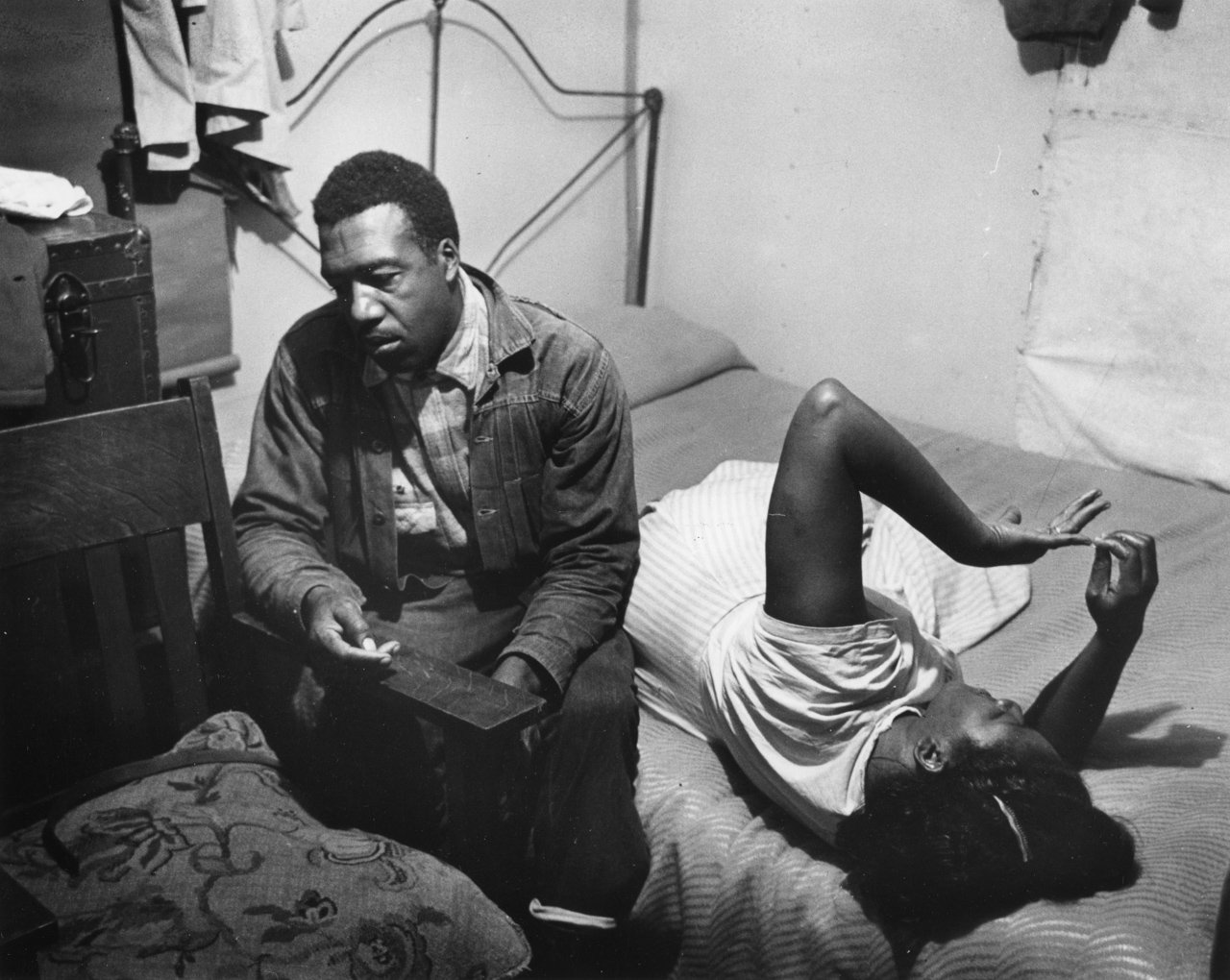This is a story I did for Ebony magazine, one of the first stories ever when they came out--not the first. Ebony's in Chicago, I'd worked for them before, and they'd asked me to do a story on cotton pickers in California ["Migrant workers camp, San Joaquin Valley, 1950"]. I went down to this area, looked around, and I found an area that looked good so I spent about two days, I think, down there. And it was one of those things, kind of like shooting fish in a barrel, everything looks good, it's so easy to photograph. Maybe I say it's so easy because the subject matter is so interesting. That's why it's so easy.
Here's a union meeting, outside a union hall that is still in the process of being built. This is at night, and it's cold. You see the little kids here are cold, they don't have any clothing. And here's a union organizer here. Also, there's a mixture of ethnic groups here. Whites and blacks, and Hispanics, they're all equal in this one. They're all suffering, or sharing the same kind of work. And the father, and child here in the windy day. This was December, I recall, when I made these pictures. Here's more of the same thing with the encampments, with the temporary tents put up.
This picture--I have another picture of a couple on the bed where she's cleaning her fingernails and this man, her husband, is sitting beside her. Sad, sad picture. Sad circumstance in that he's sitting there at the end of the day, he'd been picking cotton and he comes home tired, and he can't do anything at night because he can't afford to buy any glasses. But his wife is, in effect, just tolerating him because she's been with other men during the day, just kind of putting up with him until it's time to go to sleep. And that frustration there I feel, that resignation on his face was just tremendous.
This is an interesting situation. There's probably one acre of land in the middle of these cotton fields, adjacent to a little county road. And there's one little house there, a little tiny frame house, and it represented the realization of a goal that every cotton picker, every migrant worker has, to have a home. This man had a home, but his wife died, and they didn't have any children. So he made his available to other cotton pickers. I think he had something like three or four rooms in it, and he had three or four families there. And I don't think he charged them anything for it.
So I went into this house, I made some pictures, different happenings there. Then I found this one room where I made this picture I described to you. But, in addition, around this house on this one acre, there was room for other activities, which were tents that had been put up. And 95 shelters, he allowed them to put them on his acre, it was just beautiful. In hindsight, that should have been my story, I could have done a book on that, you know. It was just lovely.
So you run into these things, stories. When you're getting involved with it, you want to cry because of the richness of what you're seeing. The sharing, the suffering, the efforts being made. Sometimes it gets pretty hard to handle that sort of thing and still make pictures. But you know, by god, you've got to do it. [Source: An Eye On the World: oral history interview. Regional Oral History Office, University of California, Berkeley. 2003.)






























